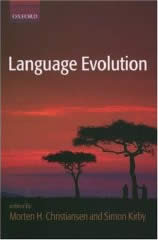Nos Sadwrn canais mewn cyngerdd gyda’r côr meibion yn Woodingdean, tref fach ger Brighton. Cyrhaeddais yno mewn amser, ond yn anffodus, es i hollol ar goll ar y ffordd o’r stop bws i’r eglwys lle cafodd y cyngerdd ei gynnal. Ar ôl disgyn o’r bws, sylweddolais mod i’n yn y lle anghywir. Ro’n i’n nabod roedd yr eglwys ar ffordd o’r enw Ridgeway ond doedd dim ond syniad amwys ‘da fi lle roedd honna. Felly cerddais yn ôl i fyny’r bryn yn chwilio am y Ridgeway. Pan cyrhaeddais ar ben y bryn o’r diwedd heb ddod o hyd i’r Ridgeway neu’r eglwys, es i i fyny ac i lawr pob un o’r ffyrdd hyn cyn i mi ddod o hyd i rywun i ofyn cyfarwyddiadau amdano. Dywedodd ef wrthaf lle roedd y Ridgeway a meddyliais fyddwn i’n cyrraedd i’r eglwys cyn bo hir.
Felly ro’n i’n ar y ffordd gywir, o’r diwedd, ond ar ben anghywir hi. Felly cerddais i lawr y ffordd, a nid ffordd fyr roedd hi. Pan cyrhaeddais i’r ben arall heb weld yr eglwys, meddyliais wrtho fy hun mod i wedi blino, yn wlyb dros ben – roedd hi’n bwrw glaw trwm trwy’r amser – ac mae’r cyngerdd wedi dechrau yn barod, felly mae’n well ‘da fi mynd adref. Ond yna weles i’r eglwys, es i mewn, a llithrais i mewn sedd yng nghefn hyd at yr egwyl – roedd yr hanner cyntaf bron wedi gorffen hyd hynny. Dyma’r tro cyntaf mod i wedi clywed y côr fel aelod o’r cynulleidfa a swniodd yn wych.
Ces i canu yn ail hanner y cyngerdd o leiaf.
Cynghorodd ein arweinydd mod i’n gorfod cael lifft i gyngherddau yn y dyfodol rhag ofn i mi cyrraedd yn edrych fel ‘llygoden wedi ei boddi’. Cyngor da! Dod â’r map byddai yn syniad da hefyd.
Luchóg báite
Oíche Shatharn chan mé i gceolchoirm le cór Breatnach i Woodingdean, baile beag i aice le Brighton. Shroich mé ansin in am, ach ar an drochuair, chuaigh mé ar seachrán idir stad na mbus agus an eaglais cá raibh an cheolchoirm ar siúil. I ndiaidh an mbus a fhágáil, shíl mé go raibh mé san áit mícheart. Bhí fios agam go raibh an eaglais ar bóthar dar bh’ainm an Ridgeway, ach ní raibh mé cinnte cá raibh an bóthar sin. Mar sin de shiúl mé air ais suas an cnoc agus mé ag lorg an Ridgeway. Nuair a shroich mé ar bharr cnoic gan tar ar an Ridgeway nó an eaglais, chuaigh mé suas agus síos gach bóthar ansin roimh tháinig mé ar duine agus chuir mé faisnéis an bhealaigh air. Dúirt sé liom cá raibh an Rideway agus shíl go shroichfinn mé ann gan mhoill.
Raibh mé ar an bóthar ceart ar deireadh, ach ag barr an cnoic in áit bun an cnoic, cá raibh an eaglais. Mar sin de shiúl mé síos an bóthar, agus ní raibh sé bóthar gearr. Nuair a tháinig mé ag bun an cnoic gan an eaglais a fheiceáil, dúirt mé liom féin go raibh mé tuirseach agus fliuch go craiceann – bhí sé ag cur báisteach an t-am ar fad – agus go mbeidh an cheolchoirm ag tosú cheana, agus rachaidh mé abhaile anois. Agus ansin, chonaic mé an eaglais, chuaigh mé isteach agus shuigh mé síos ag cúl na lucht féachana – bhí an chéad leath thart faoin am sin. Sin é a chéad uair atá mé an cór a chluinstin mar ball na lucht féachana agus bhí sé go hiontach.
Ar a laghad chan mé sa dara leath.
Dúirt ár stiúrthóir liom gur cheart dom síob a fháil agus mé ag dúl chúig cheolchoirmeacha as seo amach, nó tiocfaidh mé ann ag féachaint mar luchóg báite. Comhairle mhaith! Mapa a thógáil bhiodh smaoineamh maith freisin.
Drowned rat
On Saturday evening I sang in a concert with the Welsh choir in Woodingdean, a small town near Brighton. I arrived there on time, but unfortunately got completely lost between the bus stop and the church where the concert was taking place. After getting of the bus I realised that I was in the wrong place. I knew that the church was on a road called the Ridgeway but only had a vague idea where that was. So I marched back up the hill looking for the Ridgeway. When I finally arrived at the top of the hill without finding the Ridgeway or the church, I went up and down all the roads there before finding someone to ask for directions. He told me where was the Ridgeway and I thought that I’d soon be arriving at the church.
I was on the right road at last, but at the wrong end of it. So I off I went down the road, and it wasn’t a short road either. When I finally arrived at the other end without seeing the church, I thought to myself I’m tired, soaked – it was raining heavily all this time – and the concert will have already started, so I might as well go home. But then I saw the church, went in and slipped into a seat at the back until the interval – the first half was almost over by then. This was the first time I’d heard the choir as part of the audience and it sounded great.
At least I got to sing in the second half of the concert.
Our conductor advised me to get a lift to future concerts so that I don’t turn up looking like a drowned rat. Good advice! Taking a map would also be a good idea.
